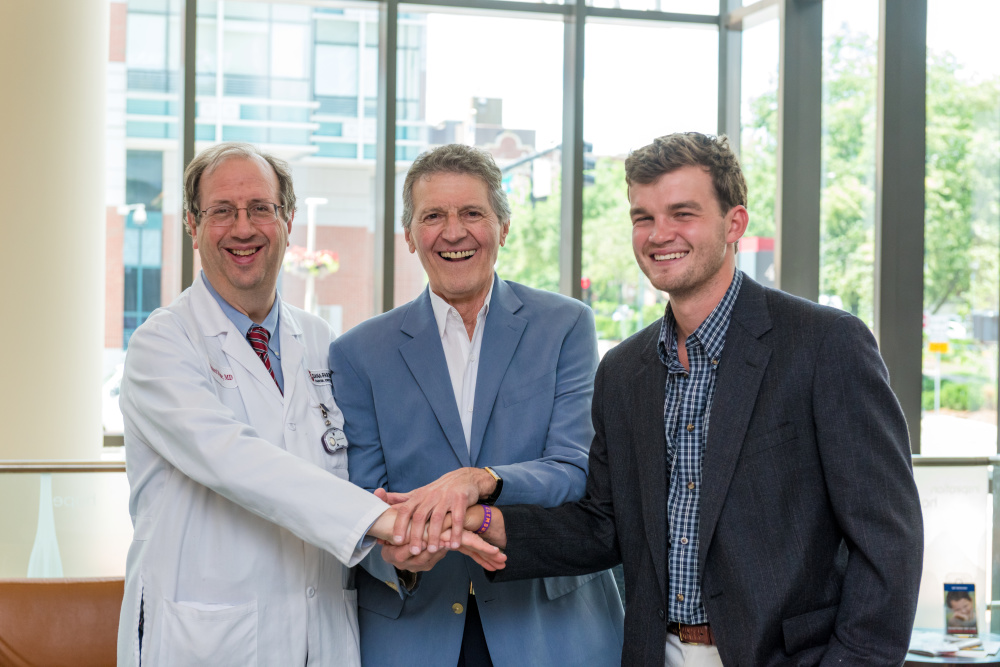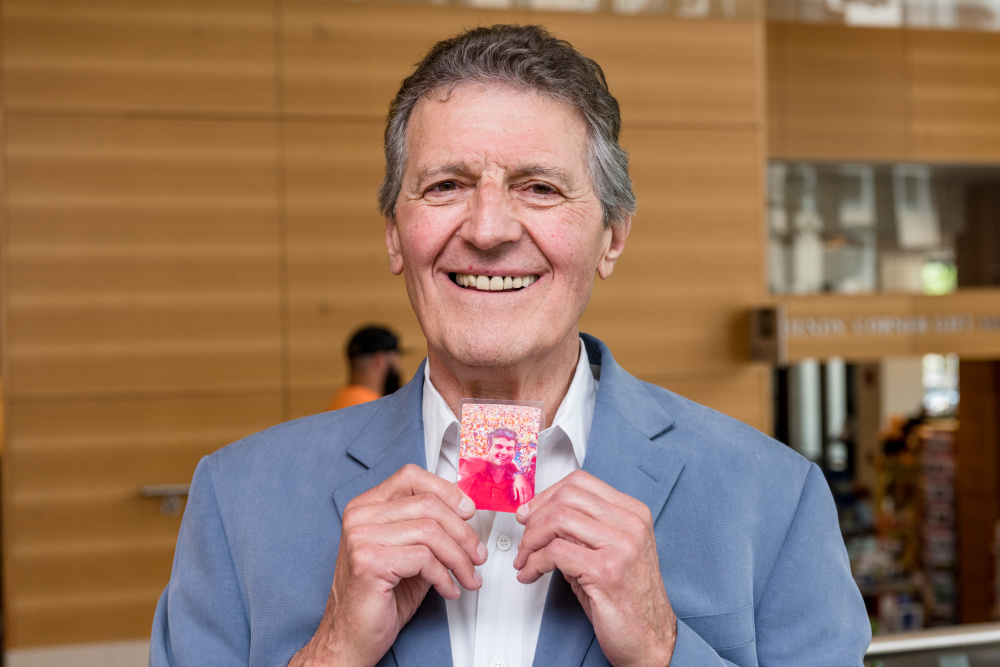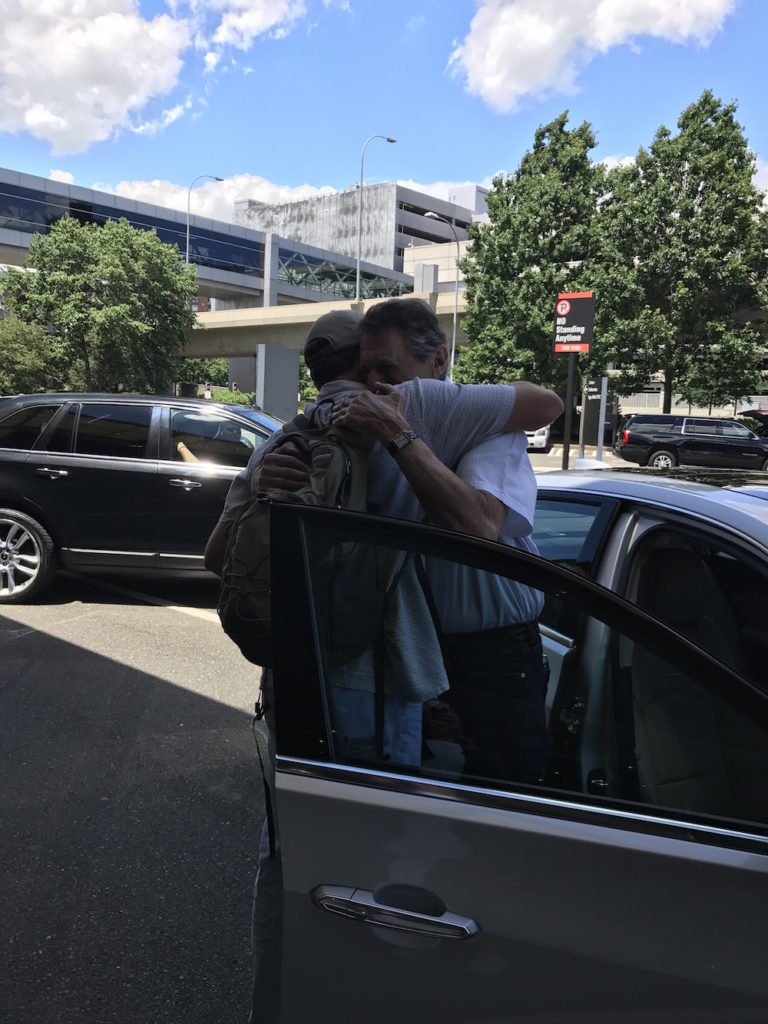
He doesn’t start medical school until August, but Matthew Churitch has already helped save a patient – and gained valuable insight into the role that hope and kindness can play in recovery.
Churitch visited Dana-Farber last month with Peter Karalekas, to whom he donated stem cells two years ago. Karalekas, 76, who also underwent chemotherapy after being diagnosed in September 2014 with myelodysplastic syndrome (MDS), a rare group of blood diseases, had waited the requisite 12 months after his May 2015 stem cell transplant at Dana-Farber/Brigham and Women’s Cancer Center to learn the identity of his donor. After another year of emails and phone calls, he and Churitch finally prepared to meet.
When they did, it was a revelation for both men.
“I hoped I would recognize him from his photos, and as soon as I saw him I said, ‘That’s Matthew,’” says Karalekas, a retired restaurant owner. “I jumped out of the car and gave him a huge hug, right in the middle of the road.”
Their reunion took place at Boston’s Logan Airport on June 26, kicking off a week during which Karalekas and his wife Mary hosted Churitch and his mother Lisa in the city and at their home in Maine. One day included tours of both Fenway Park and Dana-Farber, where they met with members of Karalekas’ care team: Ted Alyea, MD, Melissa Cochran, MS, NP, and Richard Stone, MD.

For Churitch, a Tennessee native who graduated from Clemson University in May, the chance to learn more about the challenges Karalekas faced before and after his transplant, and how his family and faith helped him through, provided lessons no classroom or textbook could replicate.
“It’s an unbelievably cool experience, and something I can tap into with my own future patients,” says Churitch. “When they are going through tough times, I can use Peter as an example of someone who was determined to recover – and how support from others helped him do so.”
That includes, of course, Churitch himself, who signed up for the National Marrow Donor Program’s Be the Match Registry in the summer of 2014 when a friend’s brother needed a transplant. It only took six months until Churitch was contacted and told he was a match, and in May, 2015 his stem cells were harvested in an eight-hour procedure in Tennessee and flown to Boston to be implanted in Karalekas. “Forty-five minutes to join the registry and help save a life,” Churitch says. “Pretty amazing.”

Mary Karalekas puts it another way: “Two and one half years ago, we were anticipating life without Peter. Now, thanks to Dana-Farber’s doctors and Matthew’s stem cells, we are celebrating Peter’s life.”
The quickness with which Churitch received his call to stem cell service earned him some good-natured ribbing from his mom, who has been on the Be the Match Registry for 20 years without a match. It also points to a growing need. Although men and women can donate stem cells until age 61, Alyea says young donors make for the best candidates.
“These reunions are wonderful,” says Alyea, “and it’s great to see people signing up for the registry. But we really need to replenish our supply of young people willing to be donors.”
As far as Peter Karalekas is concerned, there is another benefit to their donor’s youth.
“We never had a son,” he says. “Now we’ve got one, and I’m 99 percent him.”
